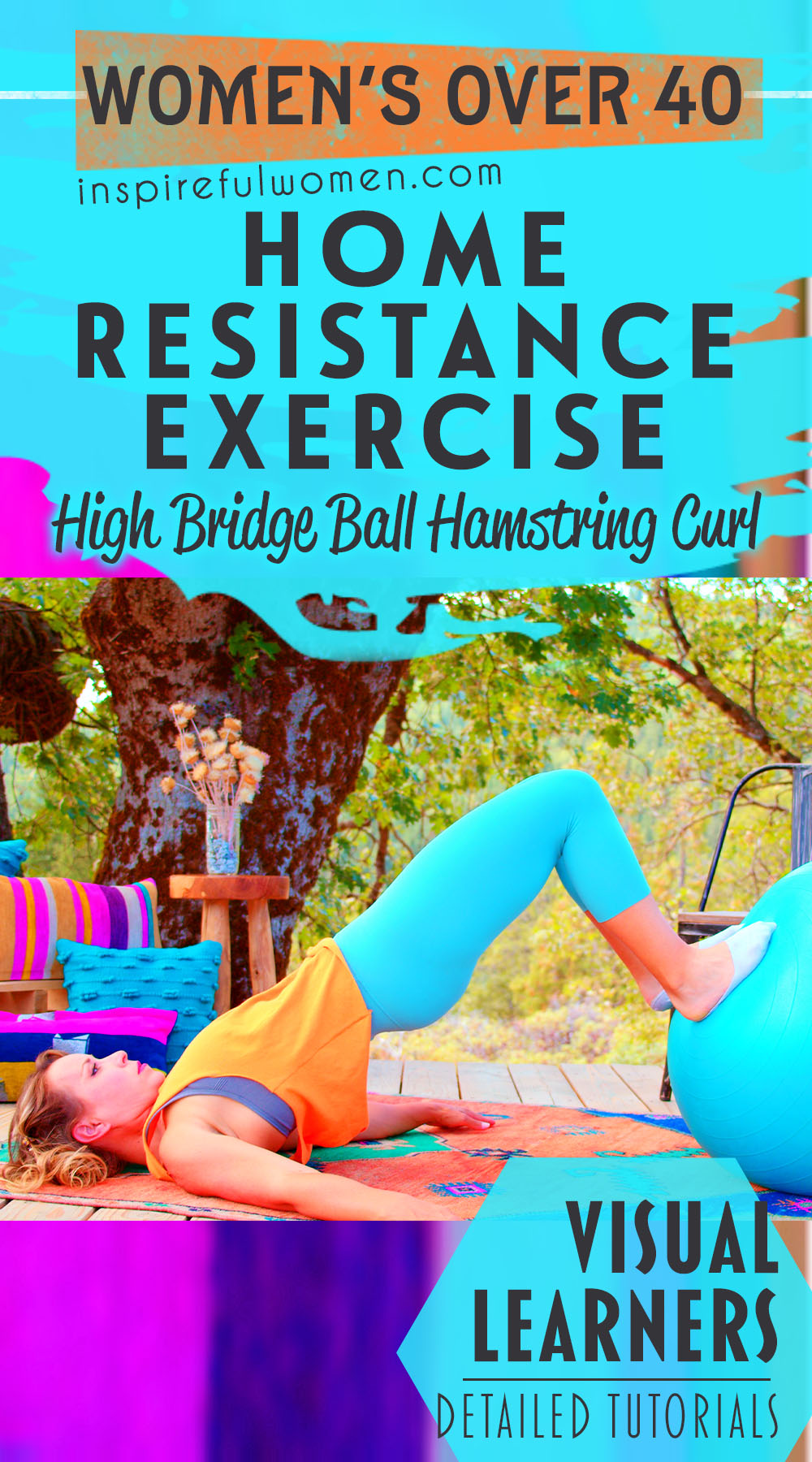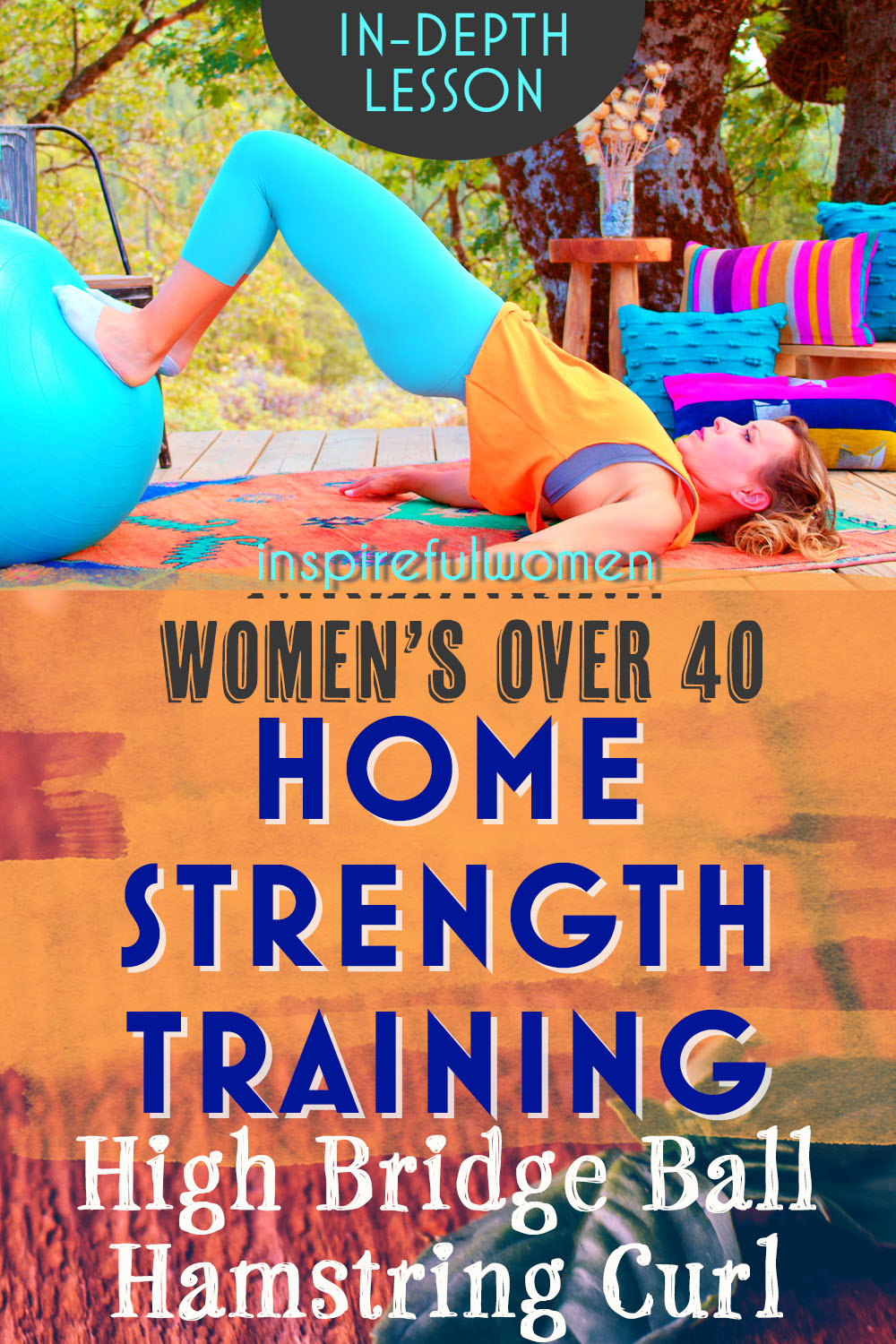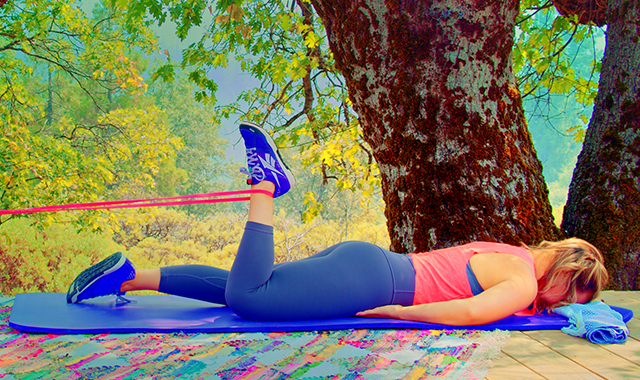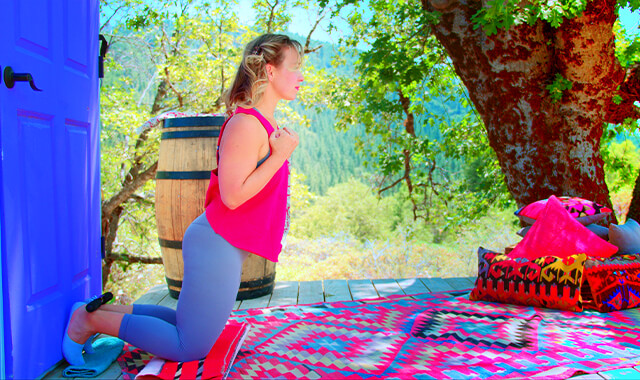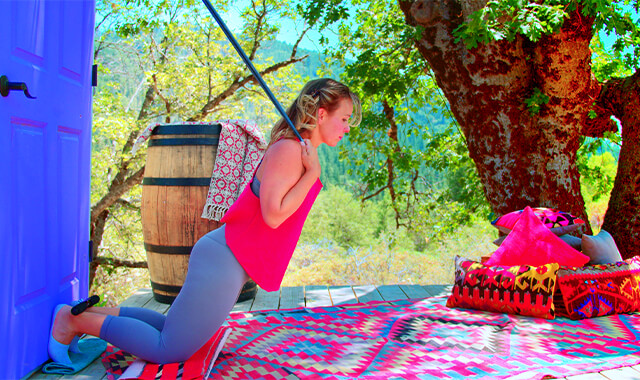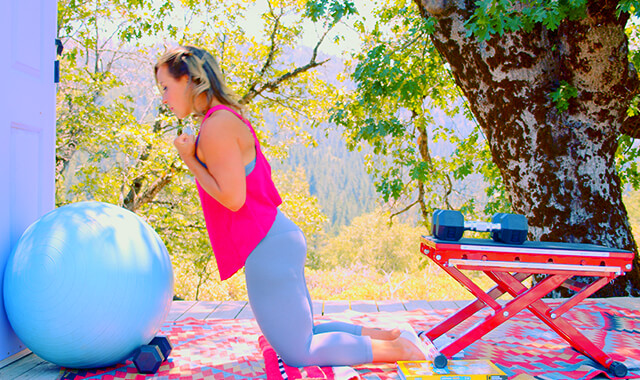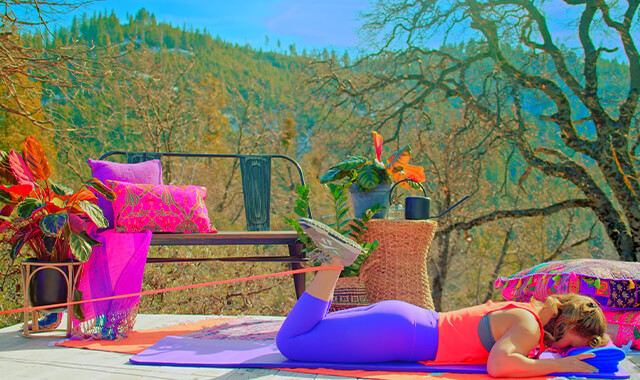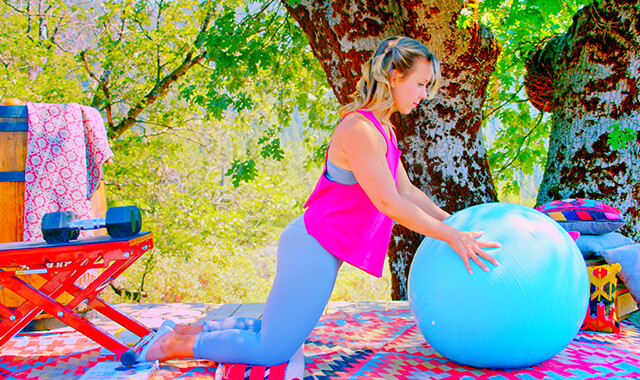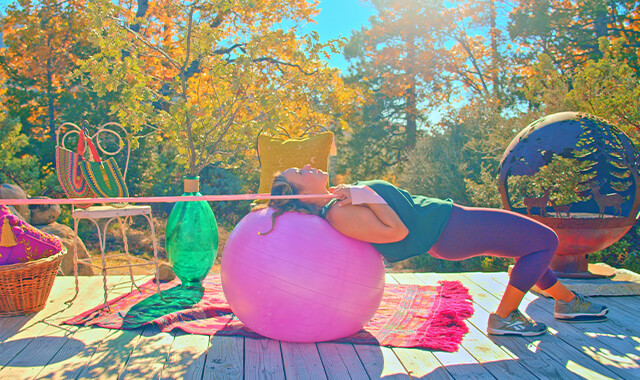High Bridge Ball Hamstring Curl
How to Do the High Bridge Yoga Ball Hamstring Leg Curl at Home | In-Depth Guide [VISUAL LEARNERS] Intermediate
Proper Form & Common Mistakes | Home Resistance Training
WHAT DO YOU WANT TO SEE?
QUICK DEMO
QUICK DEMO
MUSCLES THIS WORKS
MUSCLES
MAIN MUSCLES WORKED IN Movement High Bridge Ball Hamstring Curls
Hamstrings
OTHER MUSCLES WORKED:
- Gluteals
- Gastrocnemius
- Core
STARTING POINTERS
Starting Pointers
WHAT WE'RE DOING TODAY
ALL WE'RE DOING:
Moving your legs in and out with your legs on a yoga ball.
This is an intermediate hamstring strengthening exercise with a yoga ball. In the standard stability ball hamstring curl exercise, the hips will bend and straighten. In this hamstring curl variation, the hips stay straight throughout the exercise. It will challenge your core, gluteus maximus, and hamstring muscles more. The hamstrings work to pull the ball in but the hips remain straight and the torso lifts up. Make sure to keep the weight on your shoulders and not your neck or head.
Keeping the hips straight for movement means that the gluteus maximus and hamstrings have to work the whole time. Keeping the hips straight is also more demanding for the core muscles because they need to work with the leg muscles to stabilize the body from shoulders to knees during the hamstring curl. In the standard stability ball hamstring curl, the hips bend between repetitions, the muscles only need to stabilize from the shoulders to the hips.
HOW TO DO THE EXERCISE
LOOKS
HOW High Bridge Ball Hamstring Curls SHAPE OUR BODY
Tones and shapes the back of the thigh, buttocks, and calf; Confident posture.
PROPER FORM
PROPER FORM: High Bridge Ball Hamstring Curl
EQUIPMENT, SETS & REPS
EQUIPMENT
Stability ball
SUGGESTED STARTING WEIGHT FOR WOMEN:
None
SETS & REPS:
2 sets of 8 reps
PACE:
Slow, steady, and controlled.
BODY POSITION
BODY POSITION FOR THE High Bridge Ball Hamstring Curl
BODY STANCE: Lie on your back. Neutral spine (includes neck). Shoulders gently pressing down into the floor.
ARMS: On the floor. They can be bent with your hands resting on your chest or outstretched - having more of your arm on the floor will be more stable.
FEET: Heels/backs of ankles on the top of the ball approximately 6 inches apart.
LEGS: Knees straight.
HOW TO DO
HOW TO DO High Bridge Ball Hamstring Curls
CUE: Keep your hips straight as your torso lifts up.
Push down into the ball with the backs of your heels and use your gluteus maximus (buttocks) and hamstrings to lift your pelvis up off of the floor. You should be able to draw a line from your shoulders, hips, knees to the feet. How high your hips are lifted depends on the size of the ball and the length of your torso and legs.
Bend your knees to pull the ball in - keeping your hips extended - no bend at the hips.
As you pull the ball in towards your bottom, the ball will roll under your feet so that the bottoms of your feet will be in contact with the ball. Once your knees begin to bend, keep your shoulders, hips, and knees in a line. Your torso will continue to move up - you are pivoting at the shoulders. The further in you pull the ball the higher your torso will be lifted but the line between shoulders and knees stays consistent.
HOW TO SAFELY GET OUT OF THE EXERCISE
Bend your knees and lower your pelvis down to the floor. Remove your feet from the ball. Roll on to your side and push up to standing.
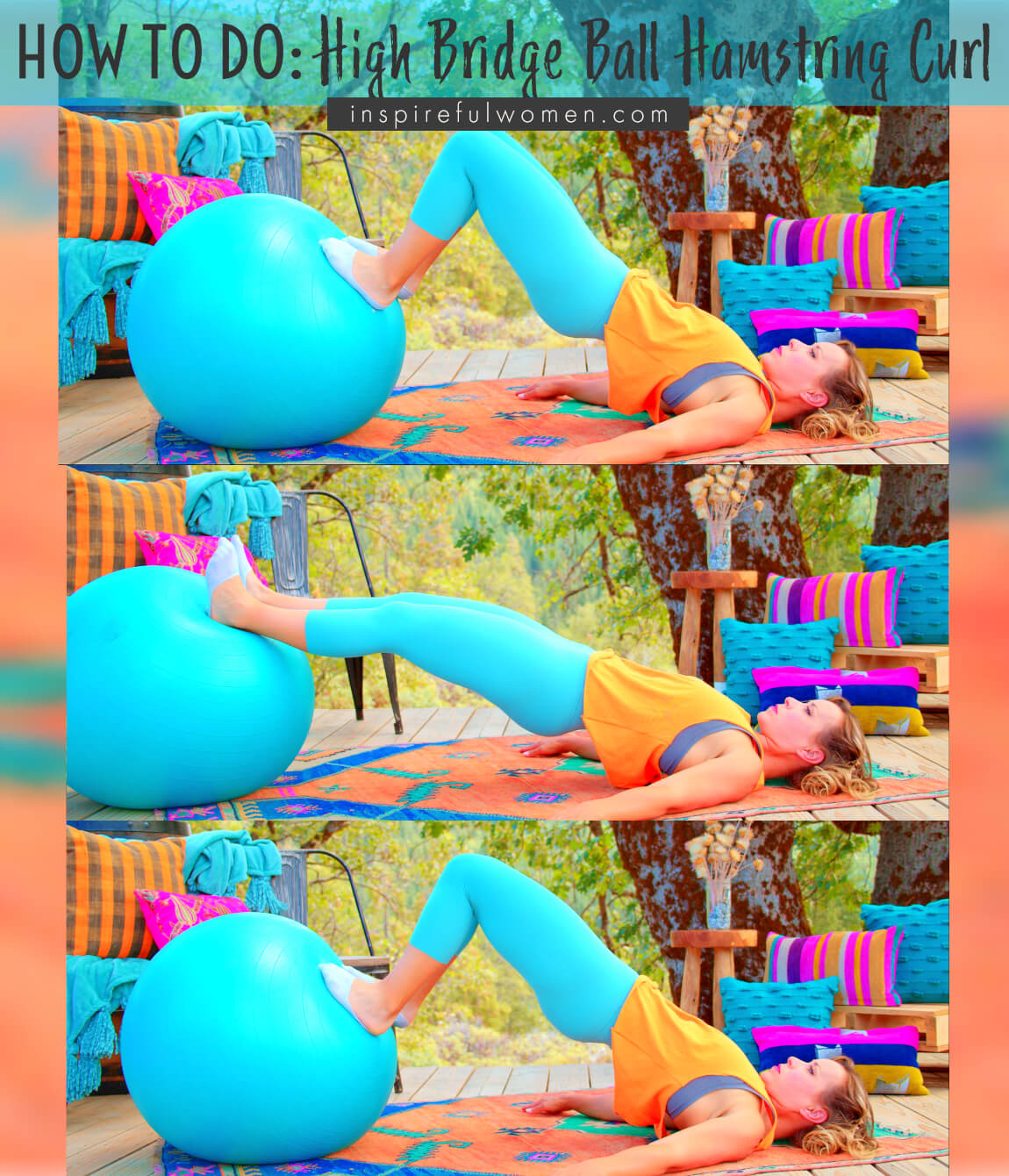
COMMON MISTAKES
COMMON MISTAKES
WHAT TO AVOID WITH THE High Bridge Ball Hamstring Curl
KEY TIP:
Guess what? Good news! Many avoids are the same for most movements. Once you learn the basics, there's really only a few extra avoids for each individual movement.
1. Avoid Weight In Head and Shoulders
AVOID: Lifting so high that you feel pressure or discomfort in the neck or head.
WHAT TO DO:
- You should feel your weight across your shoulders, not your neck.
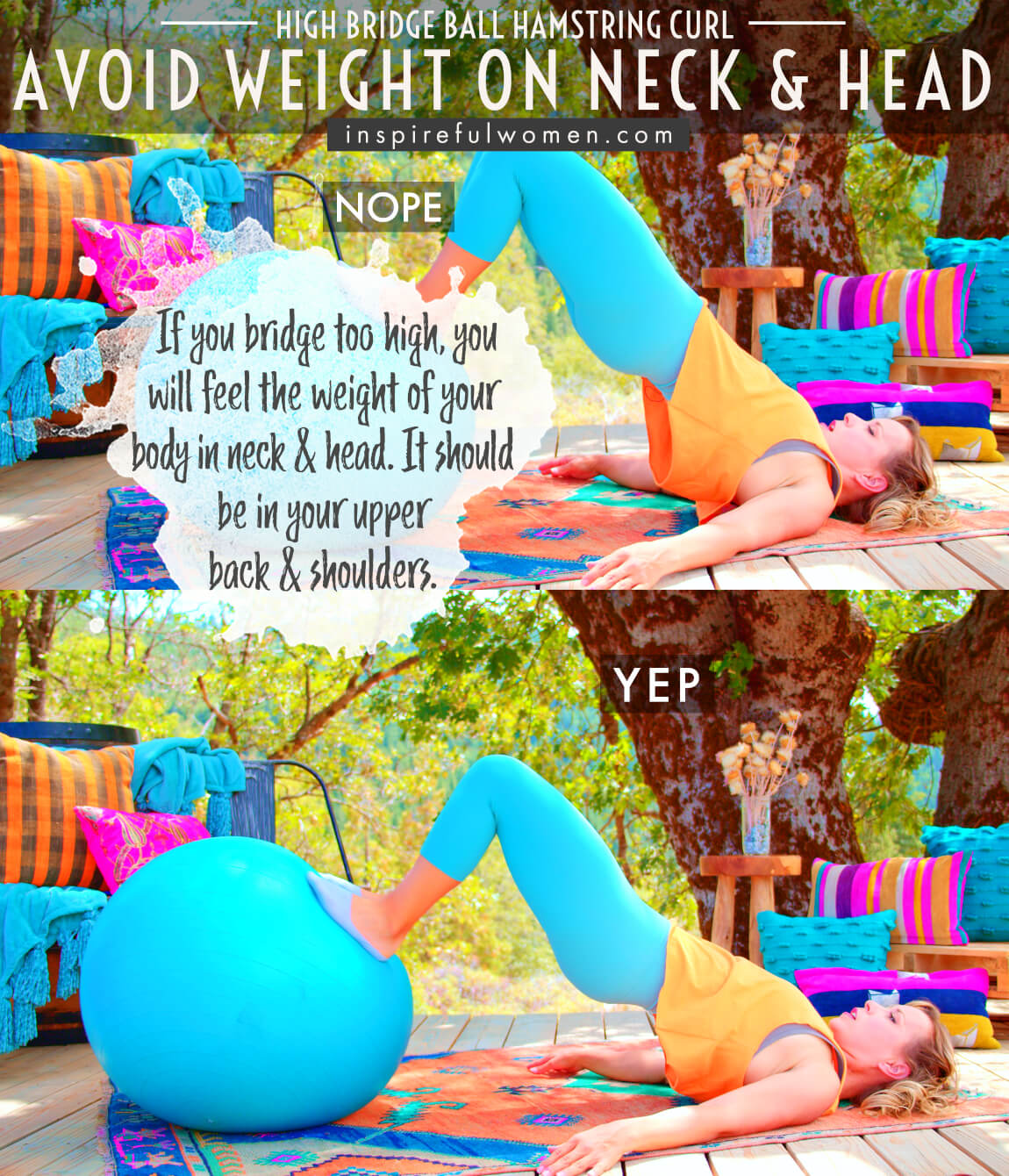
2. Avoid Tensing Upper Body
AVOID: Tensing upper body.
WHAT TO DO:
- Keep the neck and upper body relaxed.
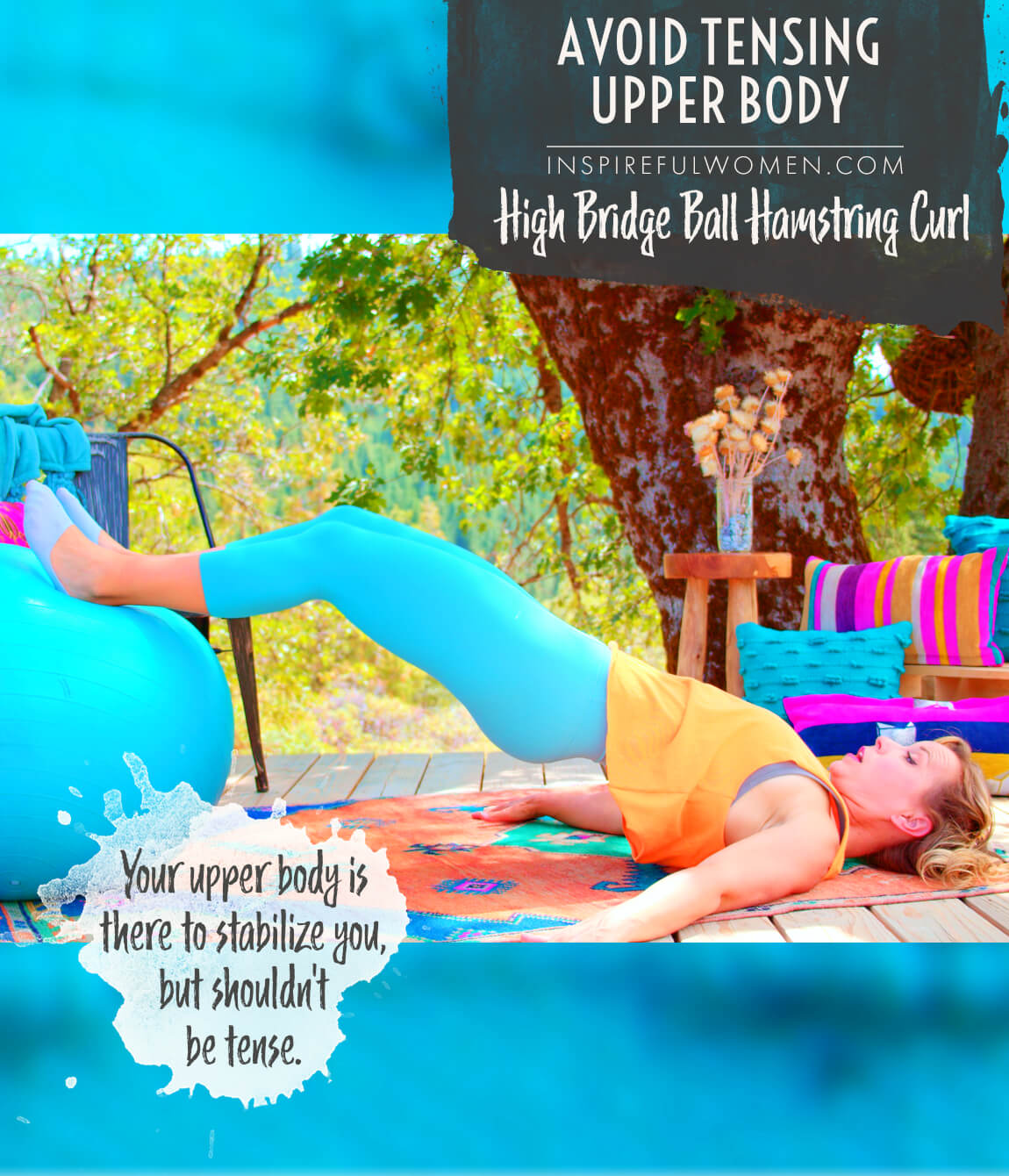
3. Avoid Misalignment Of Leg
AVOID: Letting the knees angle in or out.
WHY NOT?
- Having the knees too far apart or too close together can put a strain on the inside or outside of the knee joint.
- This can strain the ligaments.
WHAT TO DO:
- The knee should be aligned with the center of the thigh and the lower leg.
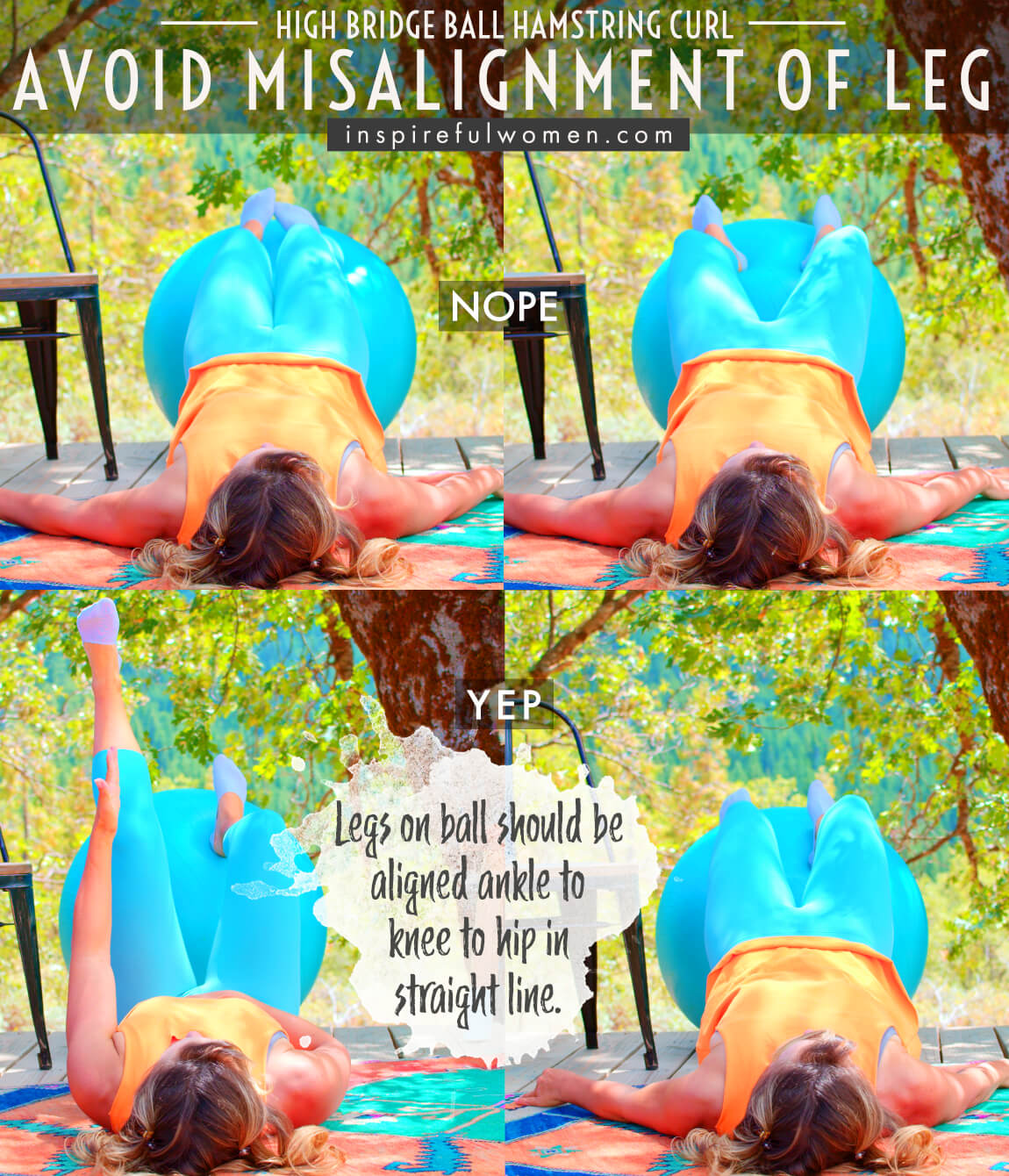
WHAT WE'RE DOING TODAY
WHAT & WHY
BENEFITS OF TRAINING THE HAMSTRINGS
WHAT
GREAT HOME HAMSTRING EXERCISE
This hamstring exercise is done lying down on the floor with your feet up on a stability ball. The beginning of the exercise is the same as a stability ball bridge. Using the hip extensors - the gluteus maximus and the hamstrings, we lift our pelvis up. Once you are in the bridge position, our hamstrings are worked by bending our knees to pull the ball in.
This exercise uses body weight as the resistance. It is a good way to work the hamstrings when you don’t have access to weight machines. This version setup also makes it possible to work one leg at a time. Many times when you work both legs at the same time, the stronger leg will be doing most of the work. This can happen without you even noticing. Working one leg at a time lets you feel the difference between the two sides. If one leg is weaker, you can work on that muscle a little bit more.
The gastrocnemius is one of the calf muscles. This muscle crosses the knee joint and helps to bend the knee. The muscles of the core will need to stay engaged to keep the spine in a neutral position.
WHY BOTHER DOING IT?
WHY
WHY DO WE EVEN CARE?
GLUTES & HAMSTRINGS SHOULD BE GOOD FRIENDS
These 2 large muscle groups should work & act together in many of our daily activities. That’s how they are designed. One of the benefits of doing hamstring curls on the stability ball is that the gluteus maximus is engaged before activating the hamstrings. This may not seem important but weak gluteus maximus muscles can result in overuse of the hamstring muscle. The hamstring tries to do the job of the gluteus maximus. This can result in hamstring cramping, tendonitis or even tears.
The hamstrings work together with the gluteus maximus to pull the leg back (extend the hip) for activities like walking, getting up from a chair, and climbing stairs. If the gluteus maximus is weak the hamstrings can become overworked.
Ain’t nobody got time for exhausted hamstrings. Plus our glutes are big, they should pull their own weight if we’re going to be hauling them around everywhere with us. ;)-
WHY WEAK GLUTES ARE A THING
There is a trend. But not a fun trend like the 2019 Fedora hat trend. No, this is an ugly trend of Weak gluteus maximus muscles. They’ve become more common. Why? Probably due to our modern lifestyle which, you guessed it, we sit a lot. Sitting too much puts the muscles that work opposite the gluteus maximus, the hip flexors (iliopsoas) in a shortened position. This can lead to tightness of the iliopsoas. A tight muscle on one side of a joint will inhibit or “turn off” the muscle on the opposite side of the joint. This is known as reciprocal inhibition. When the gluteus maximus is inhibited the hamstrings need to work overtime to extend the hip. When the hip flexor tightness is chronic (lasting for weeks or months) the gluteus maximus can become weaker because it is not being used.
So this exercise, by having the glutes turn on FIRST, to get into the right position, will help us to be sure we are working the glute muscles, in combination with the hamstrings, instead of the hamstrings flying solo and getting wiped out.
JOINTS MOVE BY MEANS OF MORE THAN ONE MUSCLE
I have to be honest. I never had a clue before just what the relationship of muscles to joints were. Not a clue. As I’ve learned from Carol the physical therapist, the joint, where 2 bones meet up in a certain way, is what allows for movement - like bending a knee or bending an elbow. This is accomplished by the muscles surrounding that joint contracting - that pulls on the other bone in the joint which then causes the “bending” to occur. Obviously, I have totally oversimplified this, but you get the idea.
The best way to keep your muscles healthy is to train all of the muscles that move the same joint to work together. The muscles that support and move the joint work in coordination, if one of the muscles is weaker than it should be, the other muscles will have to pick up the slack - putting them at risk for an overuse injury, it can also cause damage to the joint. Stability Ball Hamstring Curls activate the gluteus maximus before the hamstrings and keep them active throughout the entire set.
REDUCE BACK PAIN & KNEE PAIN
Healthy hamstrings promote good posture and spinal alignment. Hamstring tightness and weakness can lead to back pain and poor posture. The hamstrings attach to the two sitz bones - the bony parts at the bottom of the pelvis that we sit on. The hamstrings help to keep the pelvis level when we are upright. If the hamstrings are tight the muscles can pull the pelvis into a posteriorly tilted position, this flattens the lumbar spine, pulling it out of a neutral position. If the hamstrings are weak, they cannot counter the force of the hip flexors and the pelvis can tilt forward, this will increase the lumbar curve, bringing it out of a neutral position. Hamstring curls on a stability ball also work the muscles that stabilize the hips and core, and the lower leg muscles (gastrocnemius- the calves) that help stabilize the knee joint.
EVERYDAY LIFE
EVERYDAY LIFE &
MUSCLE FUNCTION
HOW WE USE OUR hamstrings IN EVERYDAY LIFE
1. BEND (FLEXES) THE KNEE
- Pushing the elevated leg rest of a recliner down
- Scooting a chair in to the table
- Pulling your foot back to tie your shoe
- Bending your knee to get into position to kick a ball
2. WORKS WITH THE GLUTEUS MAXIMUS TO MOVE THE LEG BACK (EXTEND THE HIP)
- Running up hills
- Walking up stairs
- Getting up from sitting - straightening the hip
- Walking up an incline- especially uphill
3. WORKS WITH THE QUADRICEPS TO CONTROL THE MOVEMENT OF THE LEG
- Walking
- Running
- Jumping
- Kicking
- Squatting
4. WORKS WITH THE QUADRICEPS TO KEEP THE KNEE AND HIP STABLE TO PROTECT THE JOINTS FROM DAMAGE DURING STANDING AND MOVING
- Standing
- Balancing
- Standing on a ladder with the weight on one leg to reach for painting/window washing
- Walking on ice or uneven surfaces
- Going up and down stairs
HOW TO FEEL WHAT MUSCLE IS WORKING
How to Feel What Muscle is Working
Sit on the floor with your legs out in front of you. Bend one knee up so that you can put your hand on the back of your thigh without rounding your lower back. Keep the heel of the foot on the floor. Push down with your heel and pull back, as if you wanted to pull the floor towards you. You should feel the hamstring on the back of the leg tighten.
SCIENCY STUFF
ALLLL MUSCLES & WHEN
ALL MUSCLES WORKING & WHEN DURING THE High Bridge Ball Hamstring Curl
The core and muscles that cross the hip, knee and ankle work to stabilize the joints throughout the exercise.
The hamstrings and gluteus maximus contract concentrically to straighten the hips and lift the pelvis up off of the floor.
The gluteus maximus will stay active isometrically to hold the hips in an extended (about neutral or slight extension) position.
The hamstrings contract concentrically to bend the knees and pull the ball inward.
The quadriceps act concentrically to straighten the knees and move the ball away. The hamstrings continue to push down on the ball so that it does not roll out from under your feet.
The gluteus maximus and hamstrings work eccentrically to lower the pelvis back down to the floor.
PIN IT FOR LATER!
